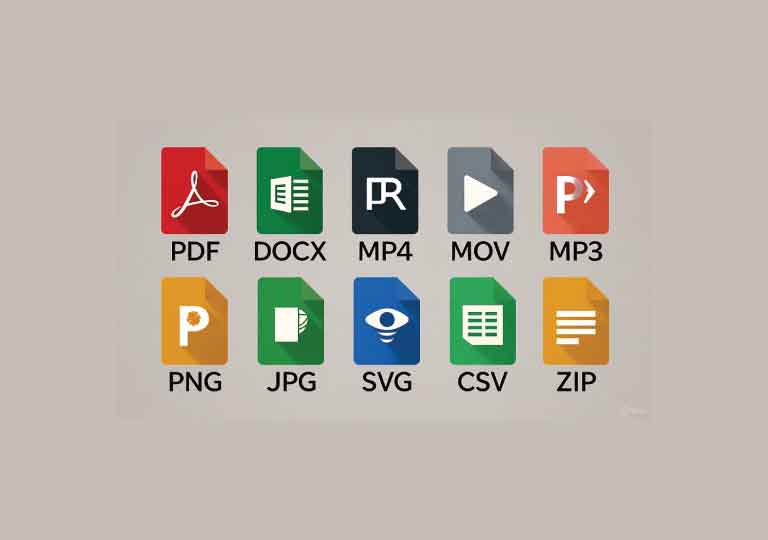In 2025, Notes on 10 File Formats Everyone Should Know, listed by category and usage.
PDF (Portable Document Format)
- Use: Documents, eBooks, Forms, Contracts
- Why it matters: Consistently supported and layout remains intact on all devices. PDFs are perfect for professional documents, resumes, cover letters, reports, or anything else you want to send that people can’t easily edit.
- Tool to use: Adobe Acrobat, Foxit, or your browser’s readers.
DOCX (Microsoft Word Document)
- Use: Word processing, resumes, reports
- Why it matters: Editable, used in schools, offices and content creation. Works with Google Docs and Microsoft Word.
- And a tip: Convert to PDF for secure sharing.
MP4 (MPEG-4 Video File)
- Use: Video for the web and mobile streaming
- Why it matters: Extremely compressed, high-quality format that supports all devices and platforms including YouTube, TikTok and Instagram.
- Codec Support: H.264 or H.265 - for the best quality-to-size ratio.
MOV (Apple QuickTime Movie)
- Use: Professional Video (Particularly for Mac)
- Why it matters: Preserves the quality of the video and the sound. Popular in the film and production industry.
- Downside: Bigger file size, not currently friendly to Windows.
MP3 (MPEG Audio Layer III)
- Use: Audio, podcasts, music streaming
- Why it matters: Small file size, but decent quality, good for playing on mobile devices, on the web and as a podcast host.
- Alternatives: AAC, FLAC.
PNG (Portable Network Graphics)
- For: Web images, icons, screenshots, logos
- Why it matters: Lossless picture quality with alpha channels, aka transparency. Perfect for websites and branding.
- File Size: Bigger than with JPG, crisper than PNG.
JPG or JPEG (Joint Photographic Experts Group)
- Use: Digital photos, social media, email sharing
- Why it matters: These look really slick as tinysized images. Great for photography and on the web, but lossy.
- Caution: Quality is lost with multiple saves.
SVG (Scalable Vector Graphics)
- Application: Logo, icons, animation, web design
- Why it matters: Vector format = No loss of quality when scaling. Light weight & easy to edit in code or vector design tools.
- Bonus: Responsive Web Development Learnings Used here in the context of responsive web developmentickerView.toLowerCase(); folgenden Form gerade in Bezug auf responsive web development verwendet wirdViewtoLowerCase();
CSV (Comma-Separated Values)
- Use: Spreadsheets and data analysis, only draw back is while exporting/importing a Database.
- Why it matters: Low-frill, simple text-based approach that works in Excel, Google Sheets, or coding environments such as Python or SQL.
- Best For: Sharing data and migrating data.
ZIP (Compressed Archive File)
- Use: Bundling and compressing files
- Why it matters: Compresses file sizes for emailing attachments and uploading and downloading files. Easy to unpack with any OS.
- Tools: 7-Zip, WinRAR, or tools with matching functions provided by an affected OS.
Bonus Tips:
- Know when to compress: Use ZIP or 7z to share multiple big files quickly.
- Be sure to check: Support for MOV or FLAC may not be available on all devices.
- If you want to share them online: Video should be in MP4 format, audio in MP3 and visuals in PNG or SVG.
Conclusion
That’s these 10 file formats are important in the professional digital world and the personal digital world in 2025. Knowing what each is good at lets you work more efficiently and communicate more clearly, and lets you guarantee that your files always look and sound the way they should whenever they’re opened.
Need some help converting files from one format to another? Make the process easier with reliable tools such as www.FileConvertz.com
